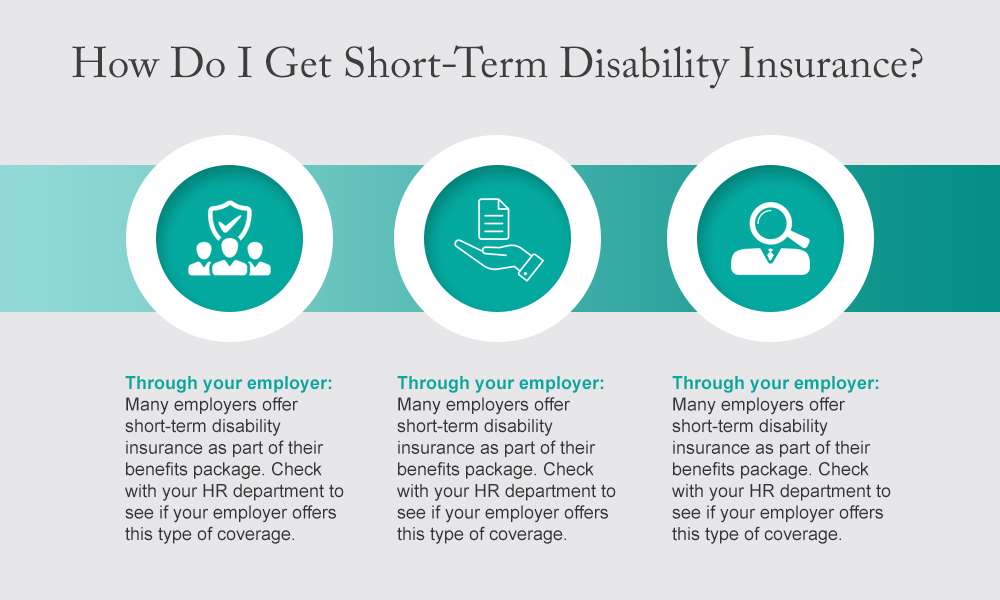Short-term disability insurance can cover some aspects of maternity leave, but it depends on the specific policy and the state you live in.
In some states, short-term disability insurance may be required to cover a portion of your maternity leave. For example, in California, Hawaii, New Jersey, New York, and Rhode Island, short-term disability insurance covers maternity leave.
However, in other states, short-term disability insurance may not cover maternity leave. In this case, you may need to explore other options, such as paid family leave or maternity leave benefits provided by your employer.
It’s important to review your policy and check with your insurance provider to understand the specific terms and coverage provided by your short-term disability insurance policy related to maternity leave.
What Is Short-Term Disability Insurance?
Short-term disability insurance is a type of insurance that provides partial income replacement for a specified period of time if you are unable to work due to a covered injury or illness. This type of insurance typically covers you for a temporary period of time, typically ranging from a few weeks to a few months, depending on the policy.
Short-term disability insurance can cover a variety of medical conditions and events, such as pregnancy and childbirth, surgery, accidents, illnesses, and mental health conditions. However, the specific conditions covered by a policy will depend on the insurer and the policy terms.
When you purchase short-term disability insurance, you pay a monthly premium. If you become unable to work due to a covered condition, you can file a claim with your insurer to receive partial income replacement. The amount of income replacement you receive will depend on the terms of your policy but typically ranges from 50 to 70 percent of your pre-disability income.
It’s important to note that short-term disability insurance differs from workers’ compensation insurance, which provides benefits for injuries or illnesses related to your job.

How Do I Get Short-Term Disability Insurance?
There are a few ways to obtain short-term disability insurance:
- Through your employer: Many employers offer short-term disability insurance as part of their benefits package. Check with your HR department to see if your employer offers this type of coverage.
- On your own: You can also purchase short-term disability insurance on your own, directly from an insurance company. You can do this by contacting an insurance agent or searching for policies online.
- Through a professional association: Some professional associations offer short-term disability insurance as a benefit of membership. If you belong to a professional association, check to see if they offer this type of coverage.
When choosing a short-term disability insurance policy, it’s important to carefully review the terms and conditions to make sure you understand what is covered and what is not covered. You should also consider factors such as the length of the waiting period (the amount of time you have to wait before benefits kick in), the amount of coverage, and the premium cost. Comparing policies from multiple insurers to find the best option for your needs and budget may be helpful.
States with paid family leave (PFL) laws
Currently, there are a few states in the United States that have paid family leave (PFL) laws that provide partial wage replacement for employees who need to take time off from work to care for a new child, a seriously ill family member, or their own serious health condition. The following states have PFL laws:
- California: California was the first state to establish a PFL program in 2004. The program provides up to eight weeks of wage replacement for employees who need to take time off to bond with a new child, care for a seriously ill family member, or recover from their own serious health condition. Beginning in 2021, employees can receive up to 90% of their weekly earnings, with a cap on the amount of benefits paid.
- New Jersey: New Jersey’s PFL program provides up to 12 weeks of wage replacement for employees who need to take time off to bond with a new child, care for a seriously ill family member, or recover from their own serious health condition. Employees can receive up to 85% of their weekly earnings, with a cap on the amount of benefits paid.
- New York: New York’s PFL program provides up to 12 weeks of wage replacement for employees who need to take time off to bond with a new child, care for a seriously ill family member, or recover from their own serious health condition. Beginning in 2021, employees can receive up to 67% of their weekly earnings, with a cap on the amount of benefits paid.
- Rhode Island: Rhode Island’s PFL program provides up to four weeks of wage replacement for employees who need to take time off to bond with a new child, care for a seriously ill family member, or recover from their own serious health condition. Employees can receive up to 84% of their weekly earnings, with a cap on the amount of benefits paid.
- Washington: Washington’s PFL program provides up to 12 weeks of wage replacement for employees who need to take time off to bond with a new child, care for a seriously ill family member, or recover from their own serious health condition. Beginning in 2021, employees can receive up to 90% of their weekly earnings, with a cap on the amount of benefits paid.
It’s important to note that PFL laws can vary from state to state, so it’s a good idea to review your state’s specific requirements and eligibility criteria.
Your Short-Term Disability Plan May Cover Pregnancy.
Yes, it’s possible that your short-term disability plan may cover pregnancy. Some short-term disability plans provide coverage for pregnancy and childbirth, while others may exclude this coverage or require additional coverage riders to be added to the policy.
If your short-term disability plan does cover pregnancy, it can provide income replacement if you are unable to work due to pregnancy-related complications or childbirth. The specific coverage and benefits provided will depend on the terms of your policy and the state you live in.
If you are considering a short-term disability plan for pregnancy coverage, it’s important to review the policy carefully and understand the coverage limits, waiting periods, and any exclusions that may apply. You may also want to compare policies from multiple insurers to find the best option for your needs and budget. Additionally, you should talk to your healthcare provider to better understand the risks and potential complications associated with pregnancy, so you can make an informed decision about your coverage options.
Consider Other Ways To Get Financially Prepared For Maternity.
In addition to short-term disability insurance, there are several other ways to financially prepare for maternity:
- Save money: Starting to save money as soon as possible is a great way to financially prepare for maternity. You can set a goal for how much you want to save, create a budget to track your spending and look for ways to cut expenses to free up more money for savings.
- Plan for time off: If you plan to take time off from work for maternity leave, it’s important to plan for how you will cover your expenses during that time. Consider how much time you will need off and how you will manage your income during that time. You may be able to use vacation or sick time, or you may need to plan for unpaid time off.
- Look into employer benefits: Check with your employer to see what types of benefits they offer for maternity, such as paid time off, flexible work arrangements, or other support programs.
- Consider a health savings account (HSA): If you have a high-deductible health plan, you may be eligible for an HSA. This type of account allows you to save pre-tax dollars for eligible medical expenses, including pregnancy-related expenses.
- Review your insurance coverage: Review your health insurance coverage to understand what is covered and what is not covered related to pregnancy and childbirth. Consider adding supplemental insurance, such as a hospital indemnity plan or critical illness coverage, to help cover out-of-pocket expenses.
By taking steps to prepare financially for maternity, you can help reduce stress and ensure that you are able to focus on your health and the health of your new baby during this important time.







